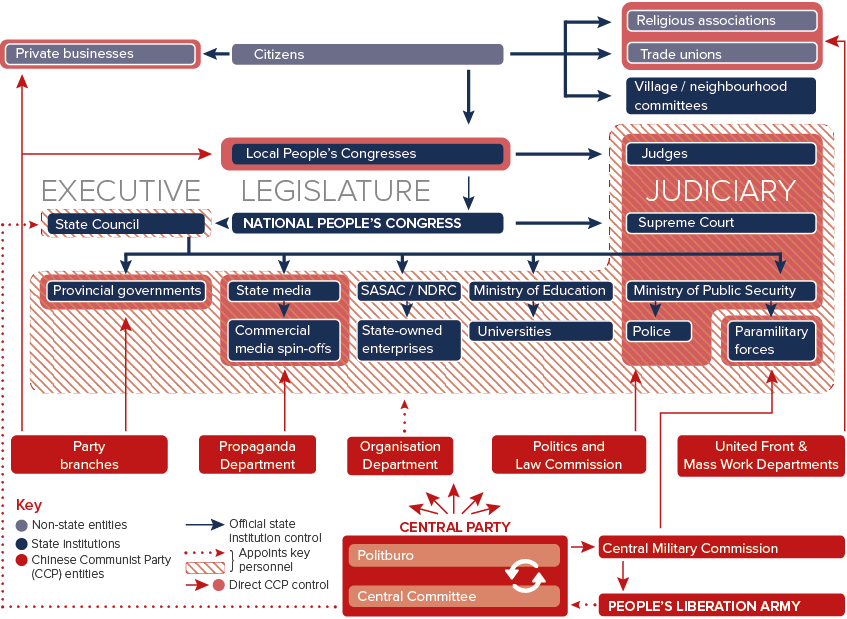China's Party-state system hides where power lies
Mapping control flows in China's Party-state system
Source: Oxford Analytica
Outlook
Superficially, China's governance structure resembles that of a typical state, with an executive, a judiciary, self-organised civil institutions and an elected legislature in which supreme power rests. However, the Communist Party -- with alternative chains of command in which most real authority lies -- permeates and undermines these institutional relationships.
This pervasive presence will doom any attempt to invest China's legislative, executive, judicial or civil institutions with greater independence.
Impacts
- The Party's all-encompassing structure means cohesion will always be a struggle.
- Family and patronage ties further blur already opaque lines of authority.
- The military's duty is to protect the Party, not the country; suggestions otherwise are heresy.
See also
- Party will reassert control over business in China - Jan 23, 2018
- China's leaders compete over 'constitutionalism' - May 30, 2013
- More graphic analysis
